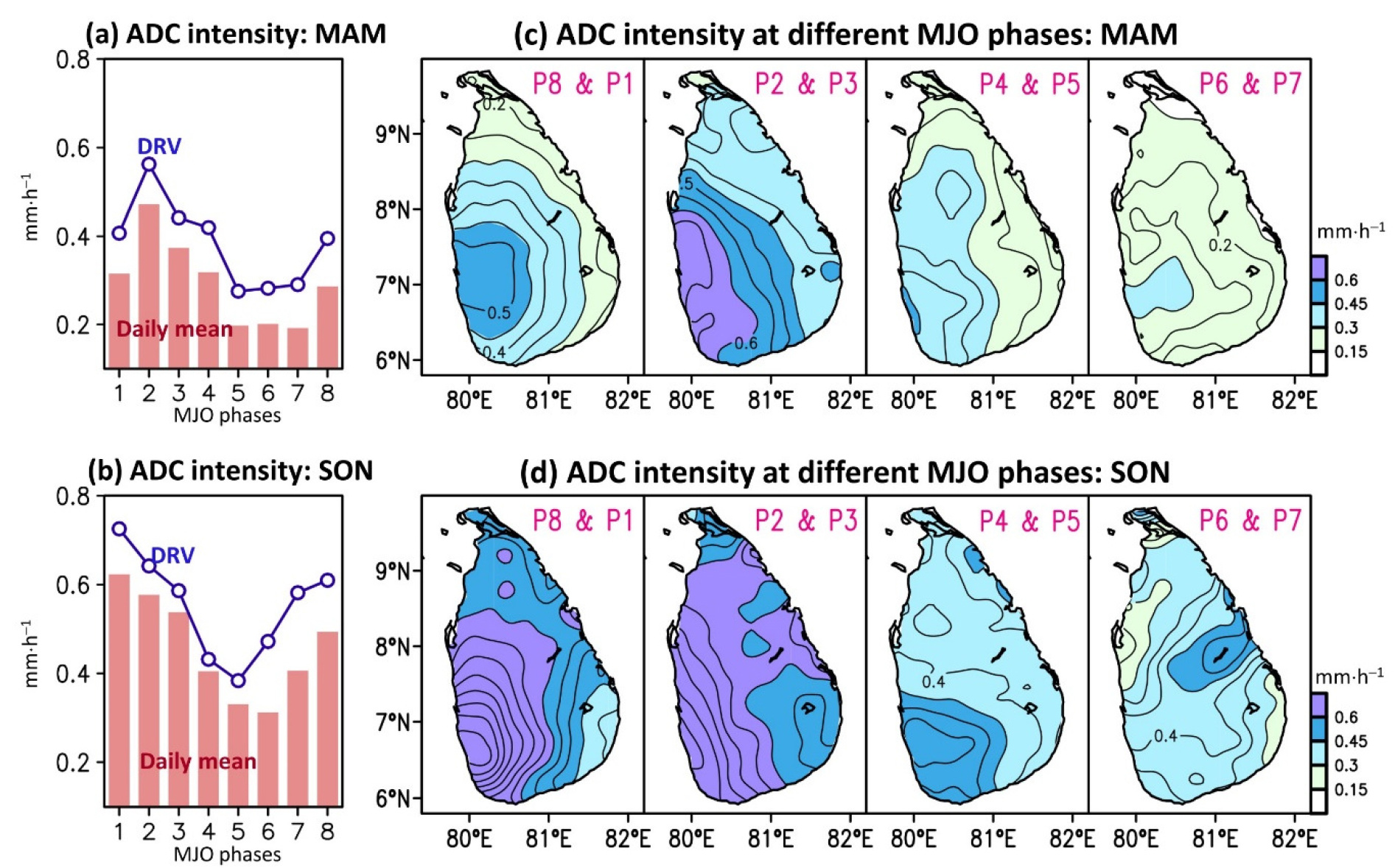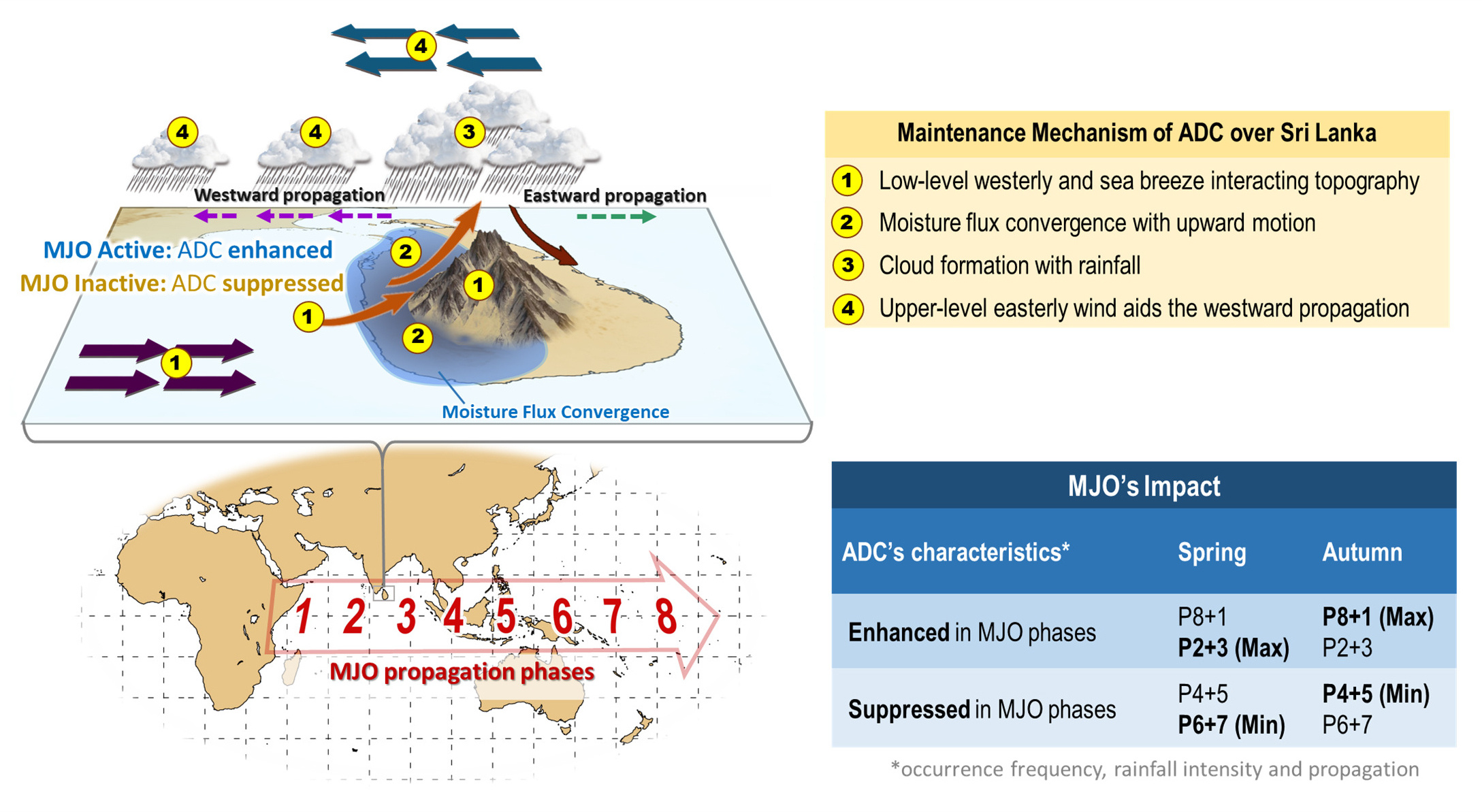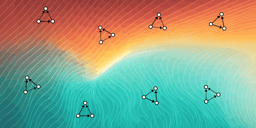The Madden-Julian Oscillation and Its Impact on Sri Lanka’s Afternoon Diurnal Rainfall
Published in Earth & Environment

Research Background
Sri Lanka, situated in the Indian Ocean between South India and Sumatra, occupies a pivotal position within the propagation pathway of the MJO. Analyzing rainfall variation in Sri Lanka is critical for understanding the MJO’s influence on regional rainfall. Previous studies investigating the MJO’s impact on diurnal rainfall variation in different regions have primarily concentrated on either the summer season, characterized by active local diurnal convection, or the winter season, marked by active MJO convection. However, in the context of Sri Lanka, spring and autumn exhibit greater diurnal rainfall variability compared to winter and summer. Therefore, in our recent study (Huang et al., 2024) published in npj Climate and Atmospheric Science, we specifically target the afternoon diurnal convection (ADC) events during spring and autumn, hypothesizing that the seasonal differences in the ADC’s characteristics (including frequency, intensity, and propagation direction) over Sri Lanka during spring and autumn might be attributed to the MJO activities in these two seasons.
Impact of MJO on ADC events
The propagation of MJO can be categorized into 8 distinct phases (P1 to P8). Overall, our analyses show enhanced (suppressed) frequency, intensity, and westward propagation of ADCs during active (inactive) MJO phases in Sri Lanka. During spring, Sri Lanka experiences maximum ADC’s intensity from P2-to-P3 and minimum ADC’s intensity from P6-to-P7 (Fig. 1a, c). However, this pattern shifts to maximum ADC’s intensity during P8-to-P1 and minimum ADC’s intensity during P4-to-P5 in autumn (Fig. 1b, d). Similarly, ADC events also occur more frequently and experience more intense westward propagation during MJO P2-to-P3 (P8-to-P1) in the spring (autumn).

A physical explanation for the MJO’s impact on ADC’s events
Our study shows that the MJO may modulate ADC characteristics over Sri Lanka in spring and autumn by influencing related atmospheric thermodynamic conditions. As summarized in the schematic diagram (Fig. 2), low-level westerly winds and sea breezes interacting with topography (Step 1) can induce moisture flux convergence accompanied by upward motion (Step 2), which leads to ADC’s formation with rainfall (Step 3) over Sri Lanka. This deep convection is subsequently modulated by the prevailing upper-level easterly winds to lead more westward offshore propagation from western Sri Lanka to nearby seas (Step 4). These ADC’s maintenance mechanisms reach their maximum (minimum) values during MJO phases P2-to-P3 (P6-to-P7) and P8-to-P1 (P4-to-P5) in spring and autumn, respectively. As a result, enhanced (suppressed) ADC’s occurrence frequency percentage, rainfall intensity, and westward propagation have been observed during MJO’s active (inactive) phases over Sri Lanka.

Fig. 2. Schematic diagram summarizing the MJO’s impact on ADC’s characteristics. The top left panel illustrates the formation of ADC over Sri Lanka following four main steps, which are detailed in the top right panel. The bottom left panel roughly illustrates the general locations of the eight MJO phases and their propagation direction, with the bottom right panel documenting the ADC’s characteristics changes (including the relative changes in occurrence frequency, rainfall intensity, and westward propagation) between spring and autumn under different MJO phase modulations.
Implications
Our study reveals the complex relationship between the MJO and the ADCs in Sri Lanka and how it affects the local rainfall patterns. These observations bear significant implications for the local community. For instance, the identified relationship between changes in ADC characteristics and MJO phases could enhance local rainfall forecasting. Improved forecasting is instrumental in mitigating floods, enhancing agricultural outcomes, and contributing to broader sustainable development initiatives in the region.
Reference:
- Huang, W.-R., S. B. Koralegedara, T.-Y. Chiang, C.‑A. Lee, P.-H. Tung, Y.-T. Chien, and L. Deng, 2024: The Impact of the Madden-Julian Oscillation on Spring and Autumn Diurnal Convection in Sri Lanka. npj Clim Atmos Sci 7, 42 (2024). https://doi.org/10.1038/s41612-024-00586-5
Follow the Topic
-
npj Climate and Atmospheric Science

This journal is dedicated to publishing research on topics such as climate dynamics and variability, weather and climate prediction, climate change, weather extremes, air pollution, atmospheric chemistry, the hydrological cycle and atmosphere-ocean and -land interactions.
Related Collections
With Collections, you can get published faster and increase your visibility.
Understanding the Dynamics of Air Pollutant and Greenhouse Gas Emissions in a Changing Climate
Publishing Model: Open Access
Deadline: Dec 31, 2025
Modeling of Airborne Composition and Concentrations
Publishing Model: Open Access
Deadline: Mar 31, 2026



Please sign in or register for FREE
If you are a registered user on Research Communities by Springer Nature, please sign in